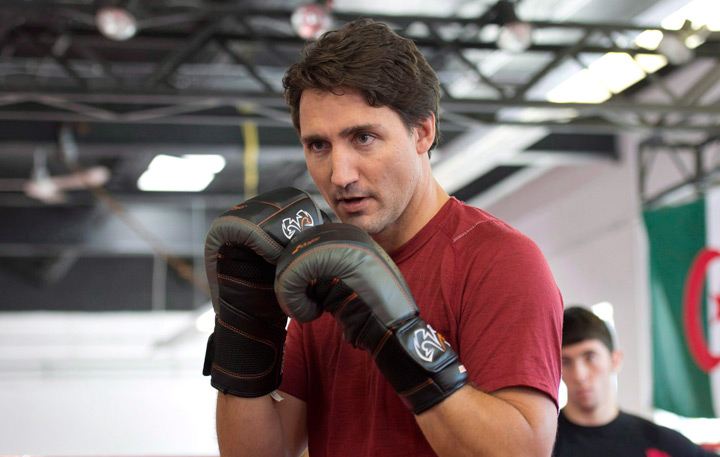Liberal Leader Justin Trudeau was “boyish”, “emotional” and “florid”. NDP Leader Tom Mulcair was “angry” and “aggressive” and Conservative leader Stephen Harper was “tough” – at least if you read the opinion pages of Canada’s top newspapers last election.

These are some of the words used to describe the various party leaders during the 2015 election, according to a new study of election coverage. Trudeau was consistently described in less masculine terms than his political opponents.
The paper, co-authored by Kyle Kirkup, an assistant law professor at the University of Ottawa and Jerald Sabin, a research associate at the Carleton Centre for Community Innovation, examined 756 news articles from top Canadian newspapers during the election.
And Trudeau didn’t always fare so well.
For example, when Trudeau was described positively as “confident” or “self-assured”, it was largely when commentators were expressing their surprise at that fact, according to Sabin, “As though the leader of the third-largest party in Canada would not be confident and self-assured.”
READ MORE: What we’re talking about when we talk about Justin Trudeau’s looks
This kind of treatment, along with comments about his hair and whether he only got into politics because of his father, mirrors the way female and minority candidates are often talked about.
It has to do with some of the assumptions and expectations around what a male politician should be, suggests Sabin.
“The ideal male politician for Canadians, I think he is tall, he is clean-shaven, he has a short-cropped haircut. He’s well-spoken. He can be aggressive when he needs to be. He has a family, so he’s typically married. He’s straight. He has kids and he uses them in his political image-making, so in commercials or on the stage while he’s giving speeches.”
So far, all three main party leaders last election approximately fit that description. But Harper and Mulcair tried to get closer to that image: Harper by promoting the idea of a “steady hand” or an old-fashioned father figure, and Mulcair by trying to be a more relatable family man, said Sabin. Trudeau did too: bringing his family along to campaign events and inviting the media to watch him boxing or canoeing.
But there were attacks too. The Conservatives in particular tried to push Trudeau further away from that ideal with ads like the famous “Nice hair, though” TV spot, hoping to make Trudeau seem vain, said Sabin.
WATCH: A Conservative ad from the 2015 election
“Ultimately what the Conservatives were trying to put forward was a ballot question that said, ask Canadians whether they consider Justin Trudeau as ‘man enough’ to be prime minister,” he said.
And in the end, Canadians did – voting the Liberals in to a majority government.
“Clearly they saw it in the last election and they decided that attacking Justin Trudeau for his hair wasn’t relevant to their decision-making in terms of who they wanted to lead the country. There were other issues that interested them,” said Sabin.
“I think that actually is quite a compliment to Canadians that they could see through that kind of thing.”


Comments